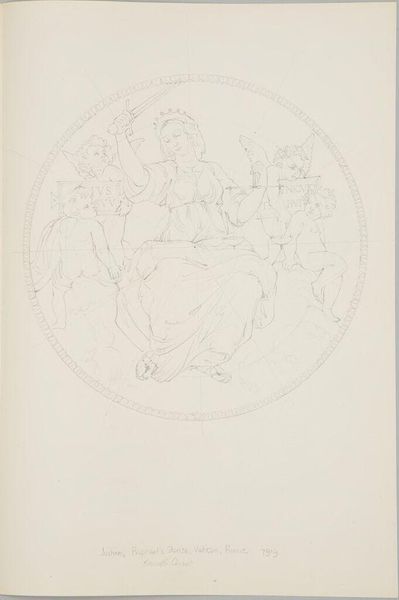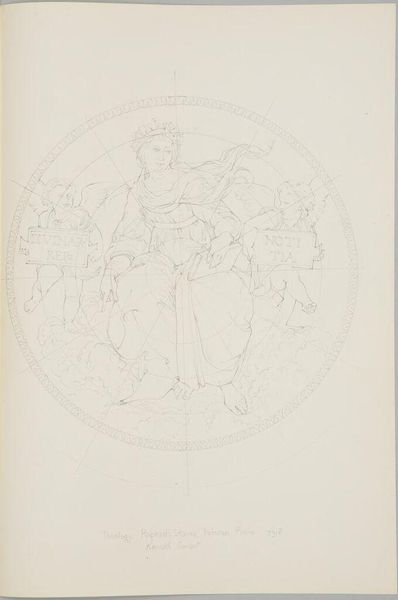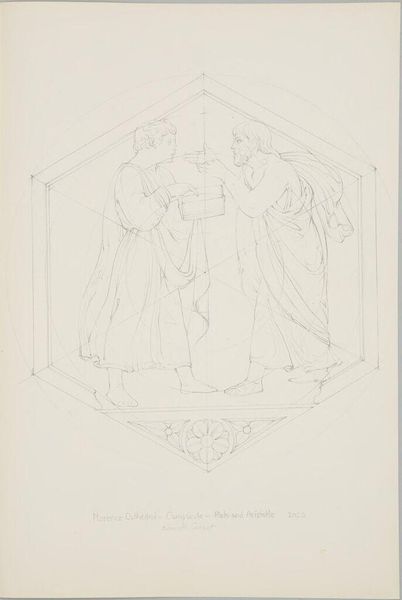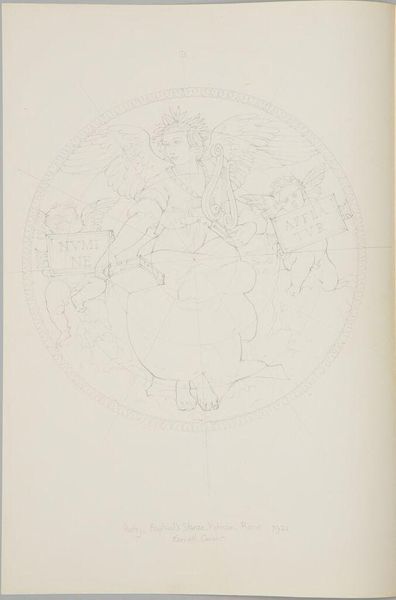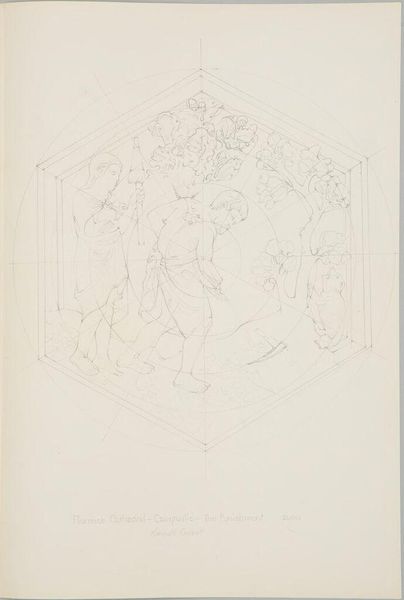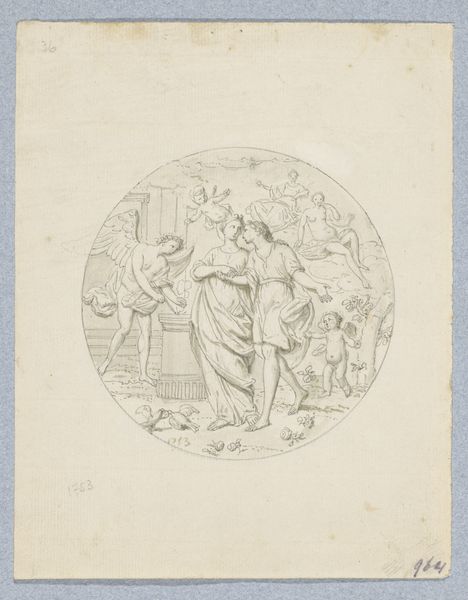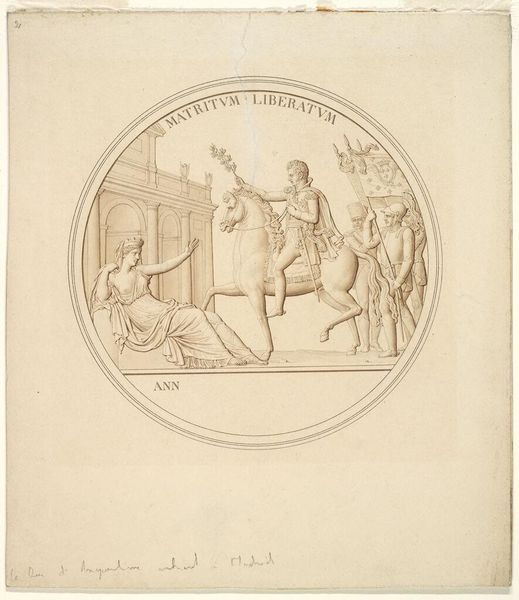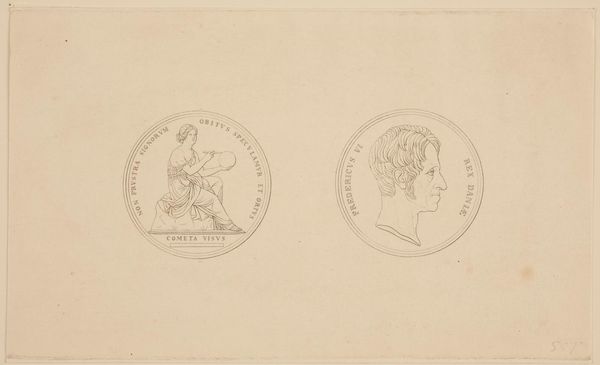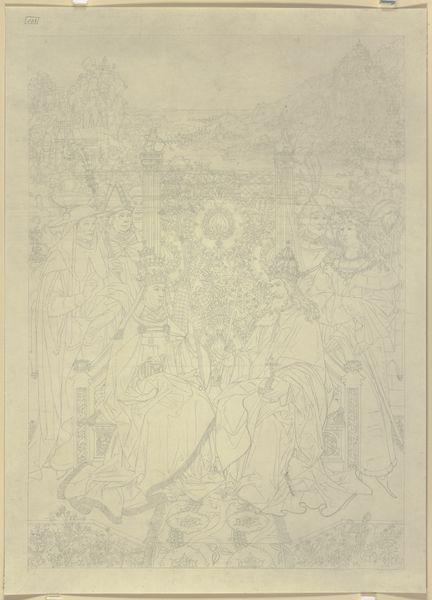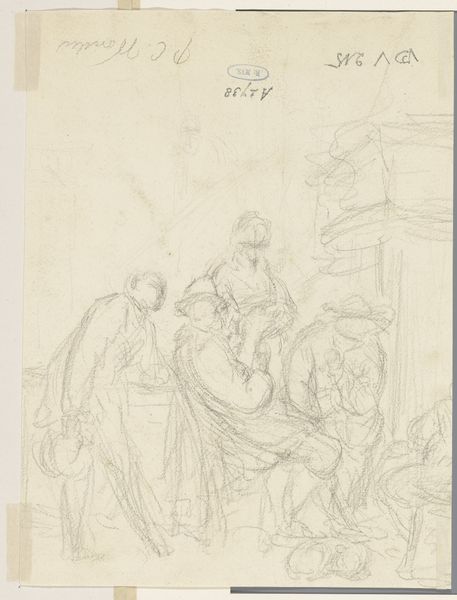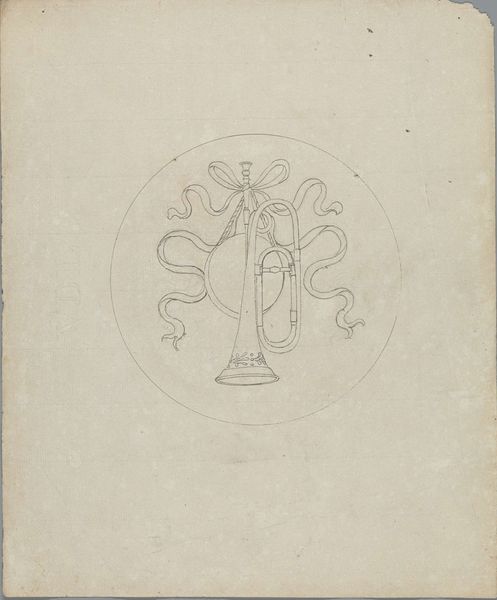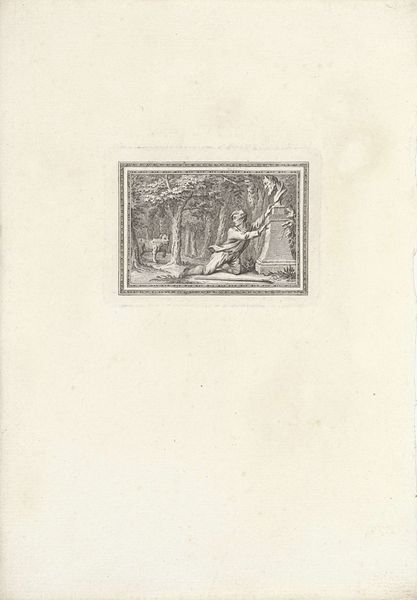
Detail of Philosophy, after Raphael, Vatican Palace, Rome, Italy c. 20th century
0:00
0:00
Dimensions: image: 18.1 cm (7 1/8 in.) sheet: 31.1 x 42.2 cm (12 1/4 x 16 5/8 in.) folded sheet: 31.1 x 21.1 cm (12 1/4 x 8 5/16 in.)
Copyright: CC0 1.0
Editor: This drawing by Kenneth John Conant depicts a detail of Raphael's Philosophy from the Vatican Palace. The circular composition and faint lines give it an ethereal quality. What strikes you about the structure of this work? Curator: The structural integrity is immediately apparent. Consider the geometric underpinnings; the careful arrangement of circles and lines provides a rigorous framework. Do you see how the central figure anchors the composition, creating a visual hierarchy? Editor: Yes, the figure really dominates the piece and seems to pull everything together. I hadn't thought of the lines as part of the hierarchy. Curator: Precisely. Even in its unfinished state, we observe a deliberate system of spatial relationships. Notice, for example, how Raphael's original design employs symmetry and balance to convey a sense of order and harmony. This approach is evident here too. Editor: I see that now. It's interesting to consider how the structure itself contributes to the meaning. Curator: Indeed. By examining the formal elements, we gain insight into the artist's intentions and the work's overall aesthetic impact. Editor: This has given me a new perspective. Thanks for sharing your insights! Curator: A pleasure. I'm glad you see how formal analysis can enrich our appreciation of art.
Comments
No comments
Be the first to comment and join the conversation on the ultimate creative platform.
